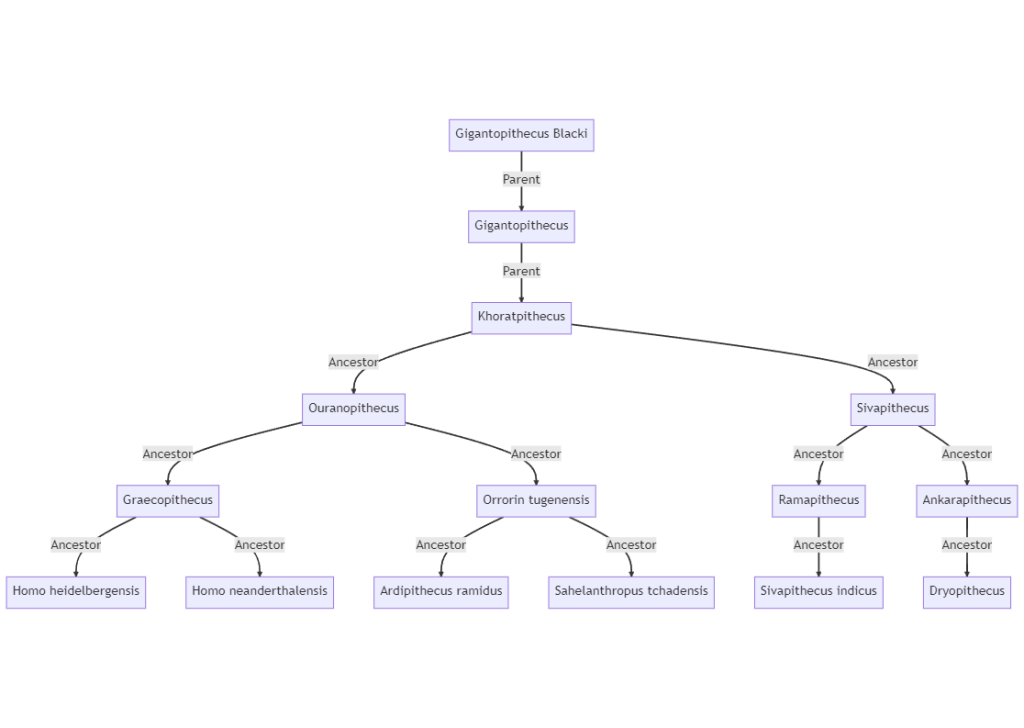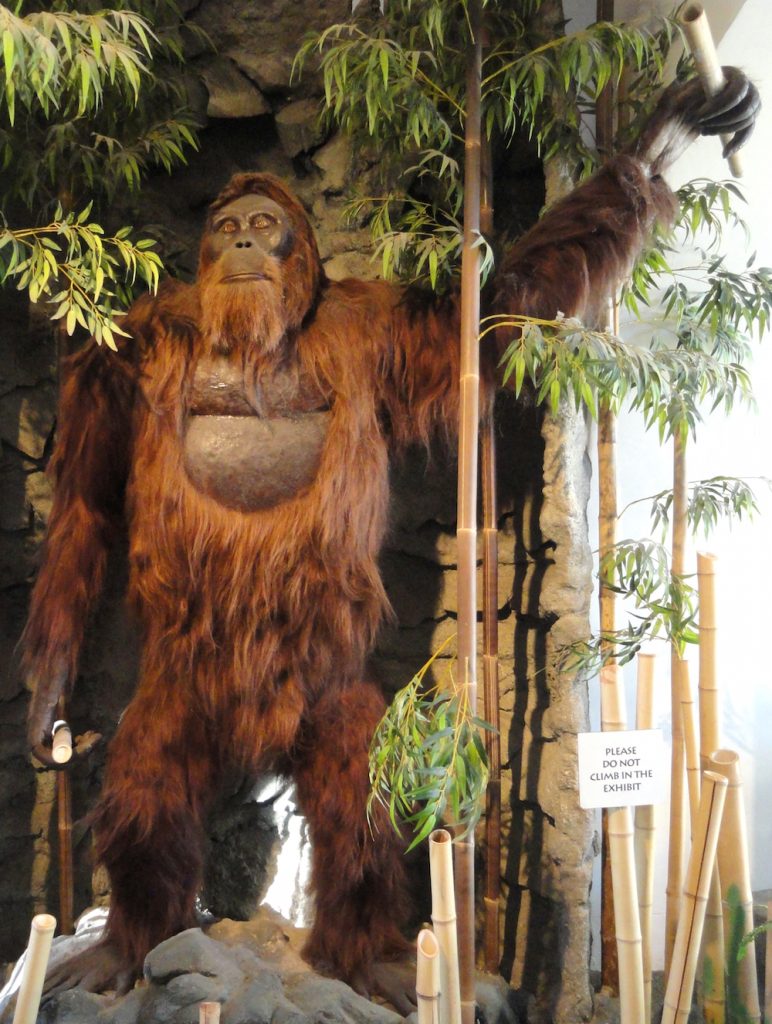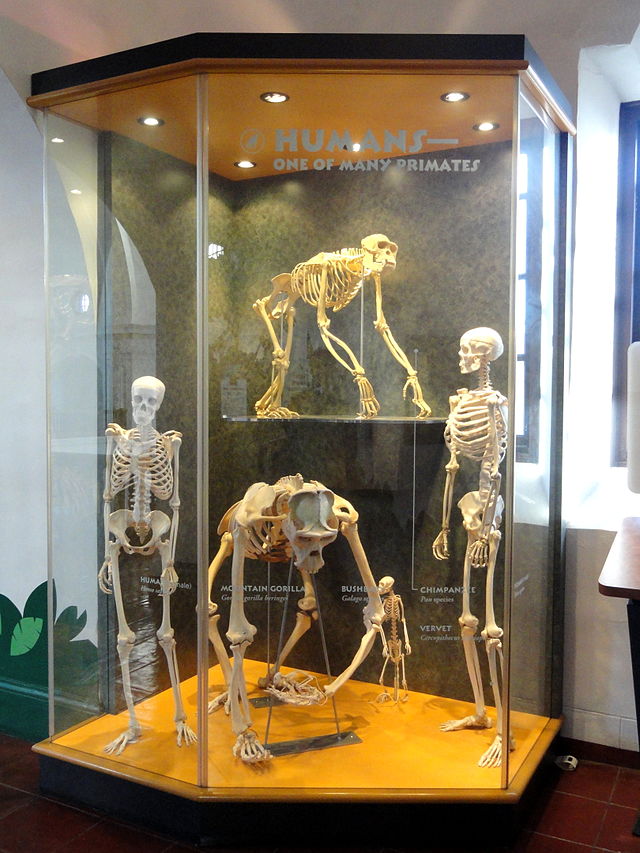Gigantopithecus blacki was an extinct giant ape that lived in the forests of Asia about 9 million years ago. It is considered the largest primate that ever lived, standing up to 10 feet tall and weighing up to 1,200 pounds. Despite its massive size, little is known about this creature due to the scarcity of its fossils. In this article, we will delve into the fascinating world of Gigantopithecus, exploring its physical features, habitat, behavior, and the mysteries that surround its extinction.
Discovery and Naming

Gigantopithecus was first discovered in 1935 by a German paleoanthropologist named Gustav von Koenigswald. While exploring a pharmacy in Hong Kong, he came across some mysterious teeth that he identified as belonging to an extinct primate. The teeth were later found to be over 9 million years old and were given the scientific name Gigantopithecus, named after the British geologist William Black.
Physical Characteristics of Gigantopithecus

Gigantopithecus is believed to have been the largest primate that ever lived. It stood up to 10 feet tall and weighed up to 1,200 pounds, making it larger than even the largest gorillas or orangutans. However, due to the scarcity of fossils, not much is known about its physical features. From what little is known, it is believed to have had a broad, flat face with massive jaws and teeth.
Habitat of Gigantopithecus Blacki
Gigantopithecus blacki lived in the forests of Asia about 9 million years ago. It is believed to have inhabited the forests of what is now China, India, Vietnam, and possibly even Indonesia. It lived in a warm and humid climate and was adapted to life in the dense forest canopy.
Diet and Feeding Habits
Gigantopithecus is believed to have been an herbivore, feeding on a diet of tough, fibrous plant material such as bamboo. Its massive jaws and teeth were adapted to grinding and crushing this tough material. It is also possible that it may have eaten fruits and other plant material as well.
Reproduction and Social Behavior
Not much is known about the reproduction and social behavior of Gigantopithecus. However, it is believed to have been a solitary animal, living in small family groups. Males may have
dominated a territory, while females and their young may have lived together in small groups.
Extinction of Gigantopithecus Blacki

Gigantopithecus is believed to have gone extinct around 100,000 years ago, during the Pleistocene Epoch. However, the exact reason for its extinction is still a mystery. Due to the scarcity of fossils, little is known about its behavior and habitat, making it difficult to determine what factors led to its extinction.
Theories About the Extinction of Gigantopithecus Blacki
Several theories have been proposed to explain the extinction of Gigantopithecus. One theory suggests that changes in the environment, such as a shift in climate or the arrival of new predators, may have played a role. Another theory suggests that competition with other primates, such as early humans, may have led to its demise. However, there is no clear evidence to support any of these theories.
Modern-Day Implications of Gigantopithecus Blacki’s Extinction
The extinction of Gigantopithecus has no direct implications for modern-day humans. However, the study of its fossils and the understanding of its habitat and behavior can provide insight into the evolution of primates and the history of the Earth’s ecosystems.
Future Prospects for Research on Gigantopithecus Blacki
The study of Gigantopithecus is limited due to the scarcity of fossils. However, advances in technology and new discoveries may provide new opportunities for research in the future. With new discoveries, scientists may be able to better understand the physical characteristics, behavior, and habitat of this fascinating giant ape.
Conclusion
Gigantopithecus was an extinct giant ape that lived in the forests of Asia about 9 million years ago. It is considered the largest primate that ever lived, standing up to 10 feet tall and weighing up to 1,200 pounds. Despite its massive size, little is known about this creature due to the scarcity of its fossils. Its extinction remains a mystery, but ongoing research may provide new insights into this fascinating giant ape.
FAQs
Gigantopithecus is considered the largest primate that ever lived.
Gigantopithecusstood up to 10 feet tall.
It is believed that Gigantopithecuswalked on two legs.
Gigantopithecusis not believed to be directly related to humans, but it is a distant cousin of the modern-day orangutan.
It is possible that Gigantopithecusmay have coexisted with other primates, but due to the scarcity of fossils, little is known about its interactions with other species.



